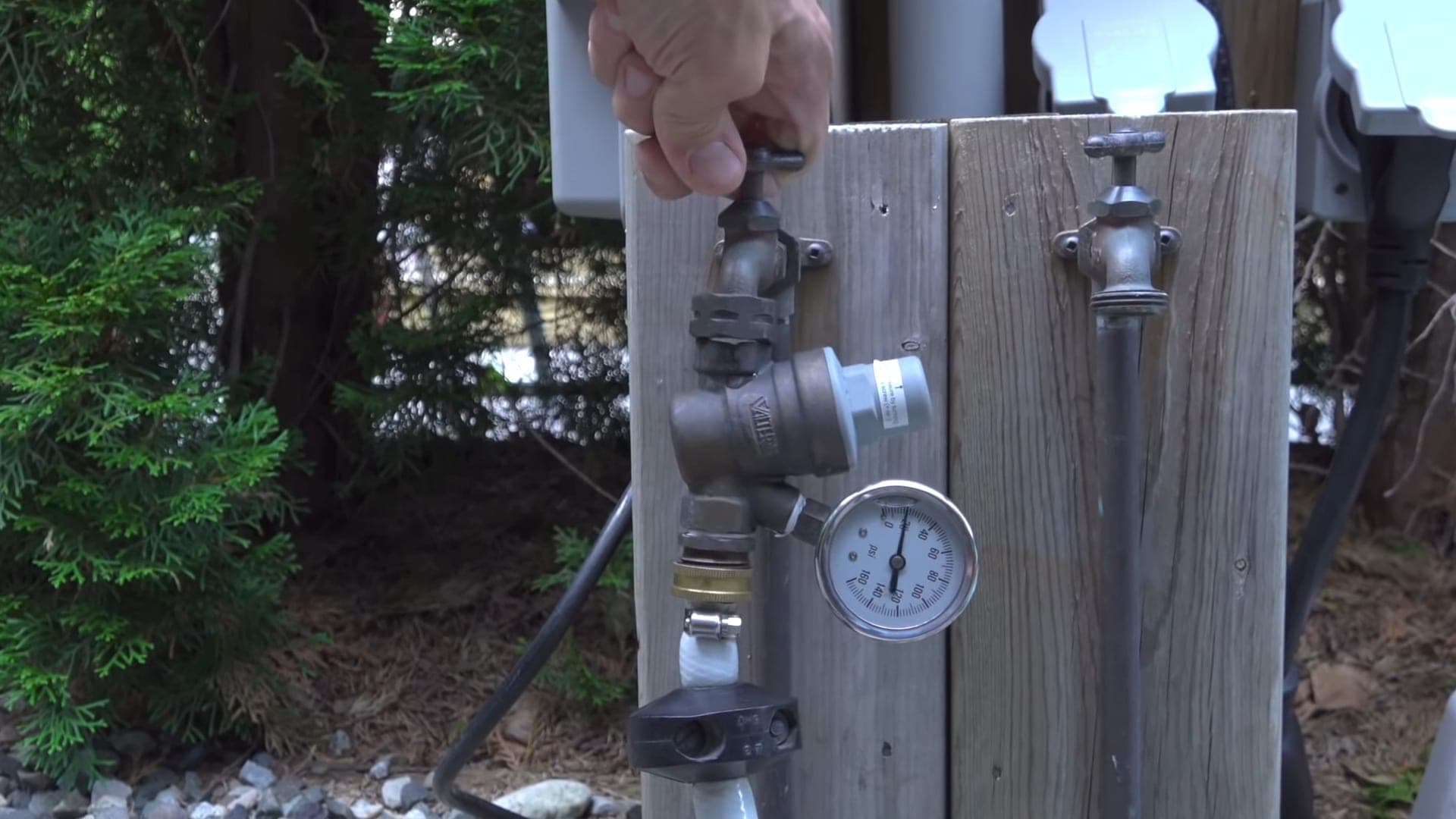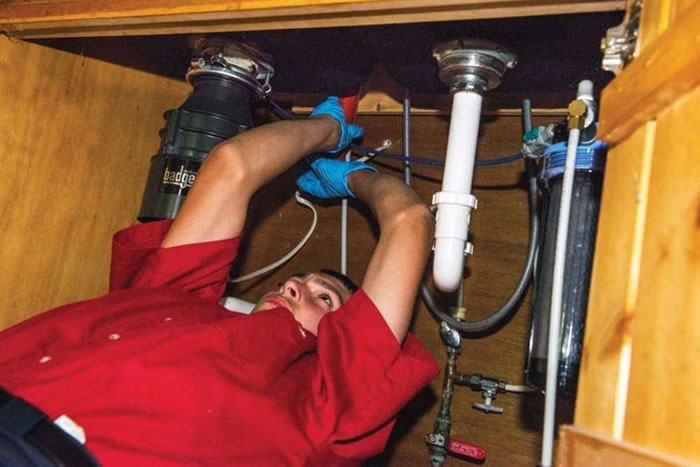How do you actually feel in relation to Dealing with Low Water Pressure in Your Home?

Low water stress in your home can be an irritating trouble, influencing whatever from showering to washing recipes. If you're experiencing weak water circulation, there are numerous possible causes and solutions to check out. In this overview, we'll review common reasons for low tide stress and sensible actions to resolve the concern properly.
Intro to Low Tide Stress
Low water stress takes place when the flow of water from your faucets, showers, and various other components is weaker than normal. This can make day-to-day jobs more difficult and less effective. Recognizing the reasons for low tide pressure is vital to finding the appropriate remedy.
Typical Causes of Low Water Stress
Pipe Obstructions
In time, pipelines can end up being obstructed with natural resource, debris, or particles, limiting the circulation of water. This is an usual concern in older homes with galvanized steel pipelines.
Rust
Deterioration within pipelines can cause leaks and decreased water pressure. Corrosion buildup can restrict water circulation, specifically in maturing plumbing systems.
Faulty Stress Regulators
Pressure regulators are in charge of maintaining consistent water stress in your home. If they malfunction, it can cause low water stress or irregular circulation throughout your home.
Community Water System Issues
In some cases, the issue lies outside your home. Community water supply issues, such as main line leakages or upkeep job, can briefly decrease water pressure in your area.
Exactly How to Identify Low Water Pressure
Inspecting Taps and Components
Begin by evaluating the water stress at various faucets and components throughout your home. If the issue is isolated to details areas, it might indicate localized issues.
Inspecting Pipelines
Inspect noticeable pipelines for signs of leaks, rust, or obstructions. Pay attention to any kind of unusual noises, such as banging or rattling pipes, which might indicate problems within the plumbing system.
Consulting with a Plumber
If you're not able to identify the source of low tide pressure, consider employing a specialist plumber to conduct a thorough assessment. They can recognize underlying issues and advise appropriate solutions.
DIY Solutions to Deal With Low Water Stress
Cleansing Aerators and Showerheads
Natural resources can collect in aerators and showerheads, lowering water circulation. Eliminate and clean up these components routinely to enhance water stress.
Flushing Water Heater
Debris buildup in the hot water heater can restrict flow and decrease performance. Purging the container occasionally helps remove sediment and keep ideal performance.
Inspecting Pressure Regulatory Authority
Make certain that the pressure regulatory authority is working correctly. Adjusting or changing the regulator can help recover appropriate water stress throughout your home.
Clearing Clogs in Pipes
For minor clogs, try making use of a plumbing snake or chemical drain cleaner to clear blockages in pipelines. Beware when using chemicals and follow security guidelines.
When to Call a Professional Plumber
If do it yourself efforts fall short to deal with the problem or if you suspect substantial plumbing issues, it's best to look for support from a licensed plumber. They have the proficiency and devices to address complex issues securely and efficiently.
Preventive Measures to Keep Water Pressure
Regular Maintenance
Arrange routine upkeep for your plumbing system to stop concerns such as deterioration, leaks, and obstructions. Resolving minor problems early can assist prevent more significant repair services later.
Setting Up a Pressure Booster
Take into consideration mounting a pressure booster pump to boost water pressure in locations with constantly low flow. This can be particularly beneficial for multi-story homes or residential or commercial properties with high-demand components.
Monitoring Water Usage
Bear in mind water usage practices and stay clear of ill-using the plumbing system. Simple modifications, such as incredible showers and laundry lots, can help keep sufficient water stress.
Final thought
Dealing with low tide pressure can be discouraging, yet recognizing the underlying reasons and implementing proper solutions can recover optimal circulation throughout your home. Whether it's cleansing aerators, inspecting pipes, or talking to a plumber, taking positive steps can ensure a stable supply of water for your day-to-day needs.
FOUR WAYS TO FIX LOW WATER PRESSURE NOW
Turning on a shower or faucet only to find the water comes out in a sad, slow drizzle is never a good feeling. How exactly are you supposed to wash a pan or take a quick shower when it takes 10 minutes just to rinse off a little soap? The good news is that when your water pressure is bad, there's always a cause: typically one that can be easily fixed. Here are some of the most common causes of low pressure and what you can do to fix the issue:
DEBRIS AND MINERAL DEPOSIT BUILDUPS
If you notice low water pressure from just one or two of the fixtures in your house, the problem likely has to do with debris buildup. Water is full of minerals and other debris, all of which can accumulate in your pipes and on your fixtures. This can cause a blockage that affects how much water flows through. To fix this, try filling a small plastic bag with white vinegar, and use a rubber band to hang it around your showerhead or faucet. Let the head of the fixture soak for a few hours, and the vinegar should loosen the deposits.
WATER LEAKS
Leaks are another common cause of low water pressure. If water is flowing out of your plumbing through a hole or crack before it can reach your fixture, the pressure coming out of the faucet or showerhead will be lower. A plumbing professional is your best bet for finding and repairing a leak in your water supply pipes.
Leaks are another common cause of low water pressure. If water is flowing out of your plumbing through a hole or crack before it can reach your fixture, the pressure coming out of the faucet or showerhead will be lower. A plumbing professional is your best bet for finding and repairing a leak in your water supply pipes.
FOUR WAYS TO FIX LOW WATER PRESSURE NOW
Turning on a shower or faucet only to find the water comes out in a sad, slow drizzle is never a good feeling. How exactly are you supposed to wash a pan or take a quick shower when it takes 10 minutes just to rinse off a little soap? The good news is that when your water pressure is bad, there's always a cause: typically one that can be easily fixed. Here are some of the most common causes of low pressure and what you can do to fix the issue:
DEBRIS AND MINERAL DEPOSIT BUILDUPS
If you notice low water pressure from just one or two of the fixtures in your house, the problem likely has to do with debris buildup. Water is full of minerals and other debris, all of which can accumulate in your pipes and on your fixtures. This can cause a blockage that affects how much water flows through. To fix this, try filling a small plastic bag with white vinegar, and use a rubber band to hang it around your showerhead or faucet. Let the head of the fixture soak for a few hours, and the vinegar should loosen the deposits.
WATER LEAKS
Leaks are another common cause of low water pressure. If water is flowing out of your plumbing through a hole or crack before it can reach your fixture, the pressure coming out of the faucet or showerhead will be lower. A plumbing professional is your best bet for finding and repairing a leak in your water supply pipes.
Leaks are another common cause of low water pressure. If water is flowing out of your plumbing through a hole or crack before it can reach your fixture, the pressure coming out of the faucet or showerhead will be lower. A plumbing professional is your best bet for finding and repairing a leak in your water supply pipes.
A VALVE ISSUE
If you have low water pressure throughout your home, check your main shut-off valve to make sure it's completely open. You may also want to see if there's a pressure-reducing valve installed. If there is, have a plumber help you adjust the settings to get the pressure you're looking for.
OTHERS USING WATER
Believe it or not, your low water pressure could be caused by your neighbors. If you notice low pressure at certain times of day, it may be because you and the people living next to you have similar schedules - when everyone is showering at the same time, the pressure will be lower in every home. Low pressure throughout the neighborhood may also be caused by an issue with your municipal water supply. If that's the case, call the supplier to see if they're working on the issue.
https://www.rotorooter.com/blog/water-leaking/low-water-pressure-fixes/

I found that blog post on 10 Reasons for Low Water Pressure in Your House when doing a lookup on the search engines. If you enjoyed our blog post plz consider to pass it around. Thanks a bunch for being here. Please pay a visit to our site back soon.
Click Here